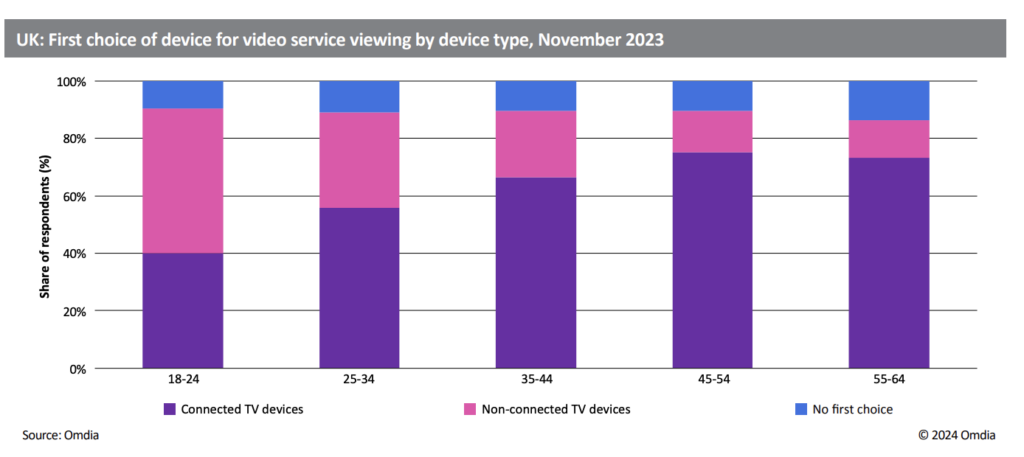
After more than 40 years of operation, DTVE is closing its doors and our website will no longer be updated daily. Thank you for all of your support.
DTVE Data Weekly: Consumers age into connected TV

Source: Omdia
As people age, many of their media and entertainment consumption habits go with them into the next stages of their lives. Observed examples of this include usage of social video services, gaming habits, and familiarity with digital assistants.
At the same time, socioeconomic factors can draw consumers into different habits that better fit new lifestyles as they age. One of the most distinguishing parts of this is the consumption of—and subsequent preference for—connected TV as a delivery platform for video service usage.
Omdia Consumer Research has consistently observed a positive correlation between consumer age and connected TV device usage and preference across all markets sampled.
For younger consumers, the preference fornon-connected TV devices is intrinsically tied to their preference for social video services such as TikTok and Instagram Reels and for online SVOD services.
Demographics
Among respondents to the Omdia Consumer Research survey conducted in November 2023, 62% of those aged 18–24 cited either a social or an SVOD service as their first choice when looking for something to watch. This is reflected in their device preferences, with nearly 30% in the 18–24 age group preferring smartphones, 12% laptops/ PCs, and 7% tablets.
This non-connected TV usage is not necessarily to the detriment of connected TV, however, with a further one-quarter of this group citing in-built smart TV apps as their first choice when looking for something to watch—the most popular device combination with SVOD services.
As soon as a consumer reaches the next age bracket, the prevalence of connected TV becomes apparent. Around half of sampled consumers aged 25–34 prefer a connected TV device for video service viewing, up from around 40% in the 18–24 age group. This figure grows to over 60% for those aged 45–54 and can peak at more than three-quarters of the age group, depending on the market.
For most markets, the 25–34 age group is the beginning of a significant change in household composition; fewer consumers are living with their parents/guardians, there is greater individual ownership of households, and children are more likely present in the household. These trends continue their positive correlation through most of the age groups sampled by the Omdia Consumer Research survey, only being broken at the 55–64 age group, where “No first choice” takes a greater share of responses for both device and video service.
This combines with other socioeconomic adjustments in an age group that is significantly more likely to be retired or out of work and is significantly less likely to have children in the household compared to preceding age groups.
Max Signorelli is Omdia’s principal analyst, media & entertainment